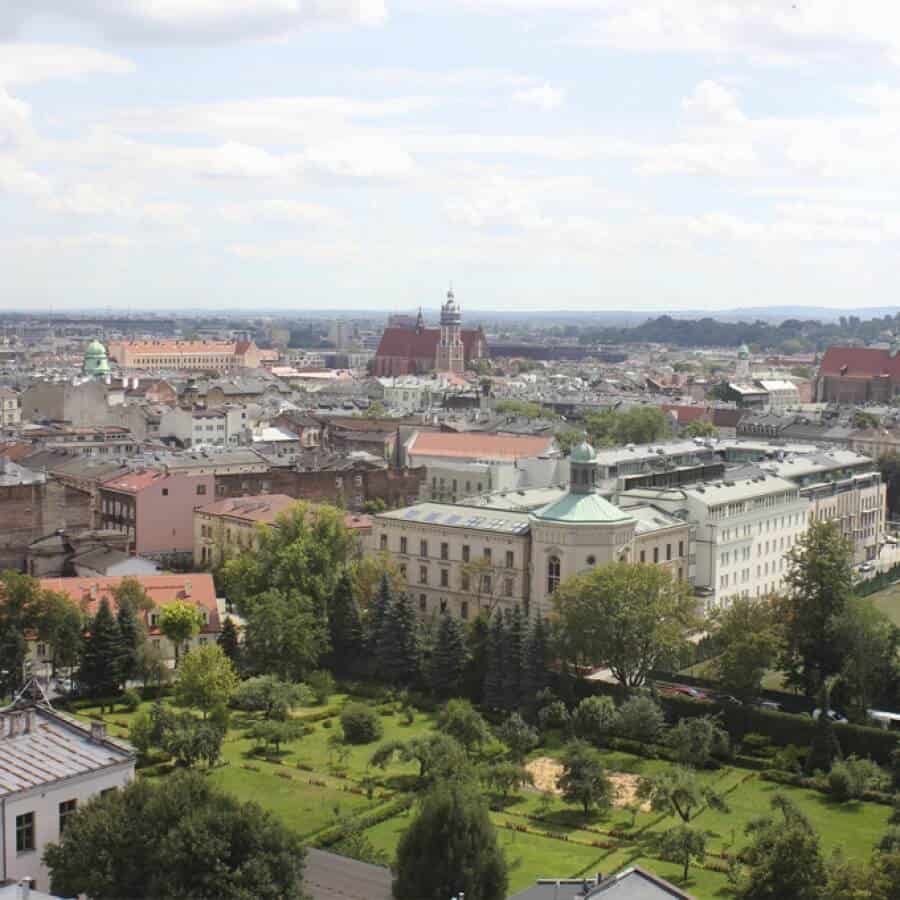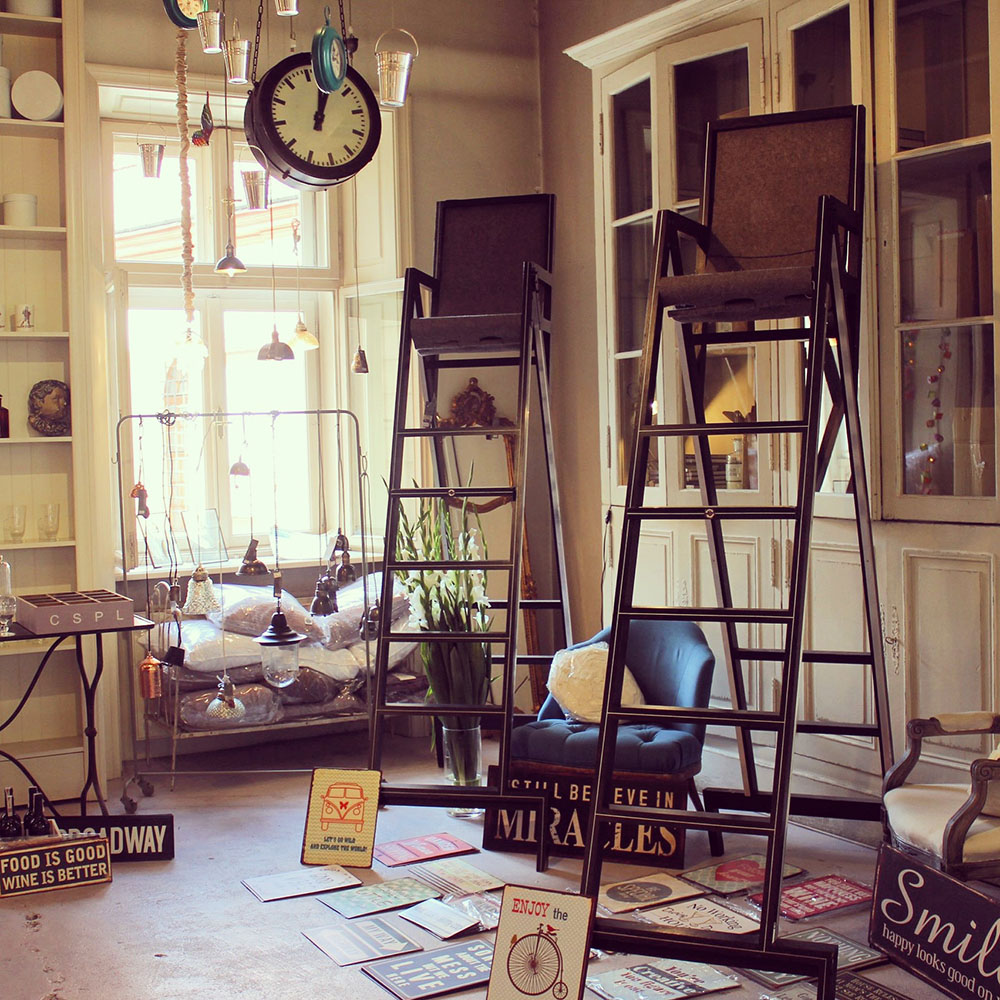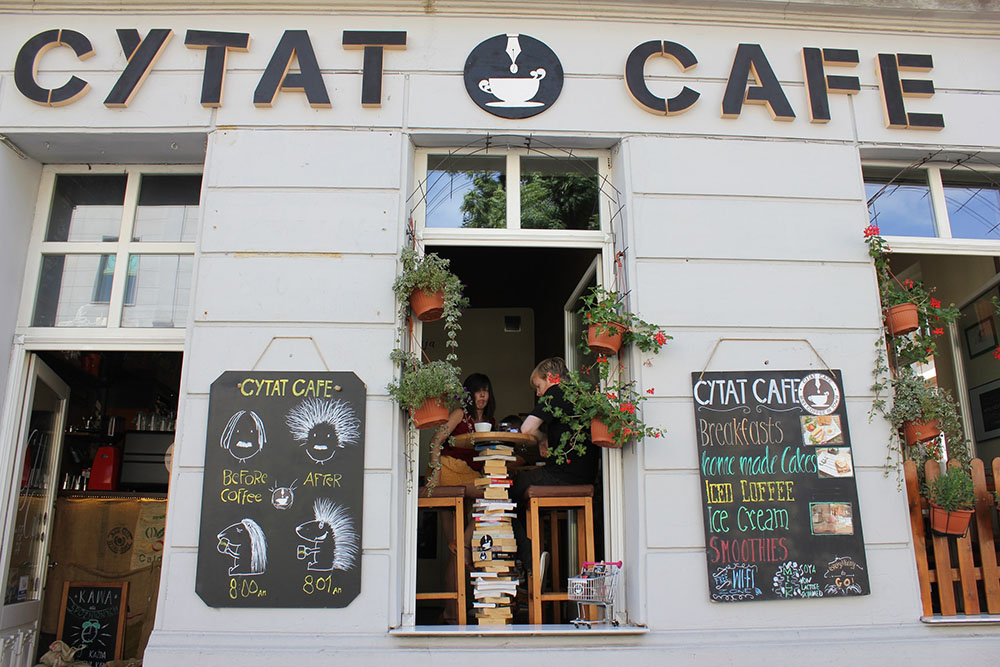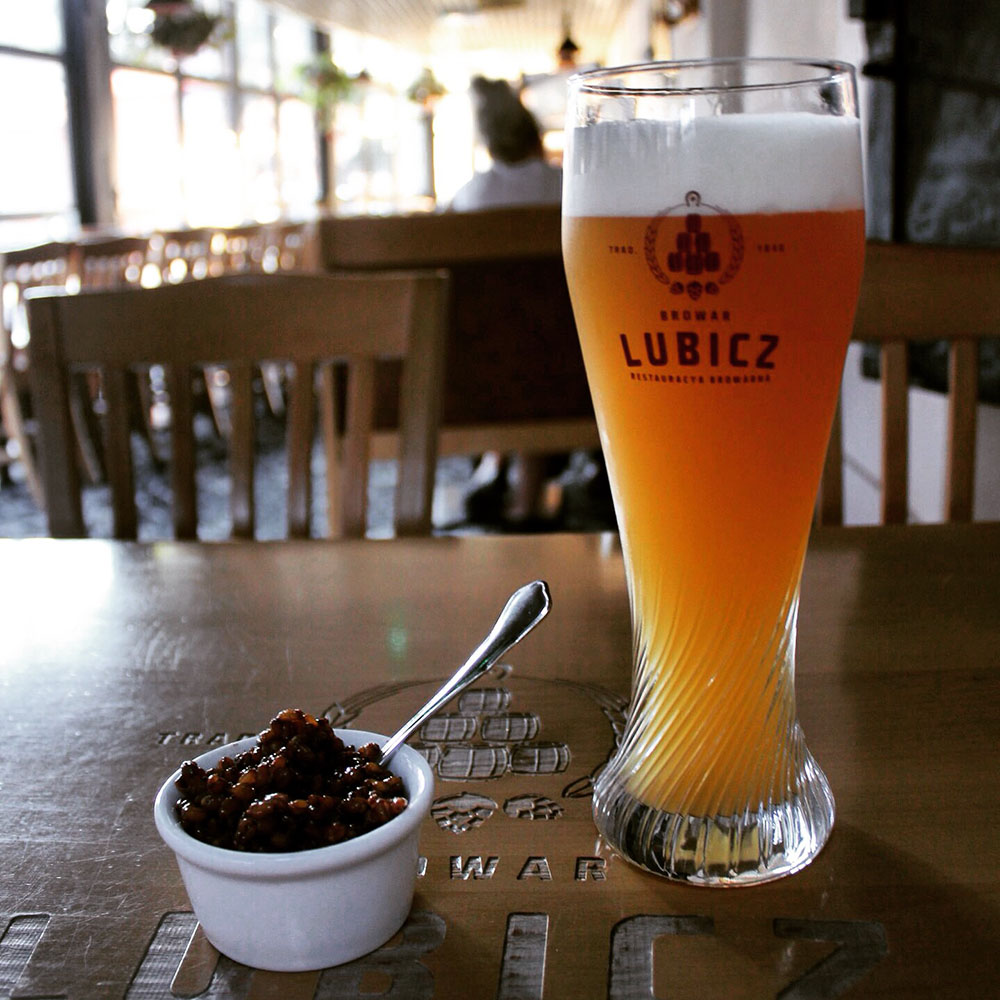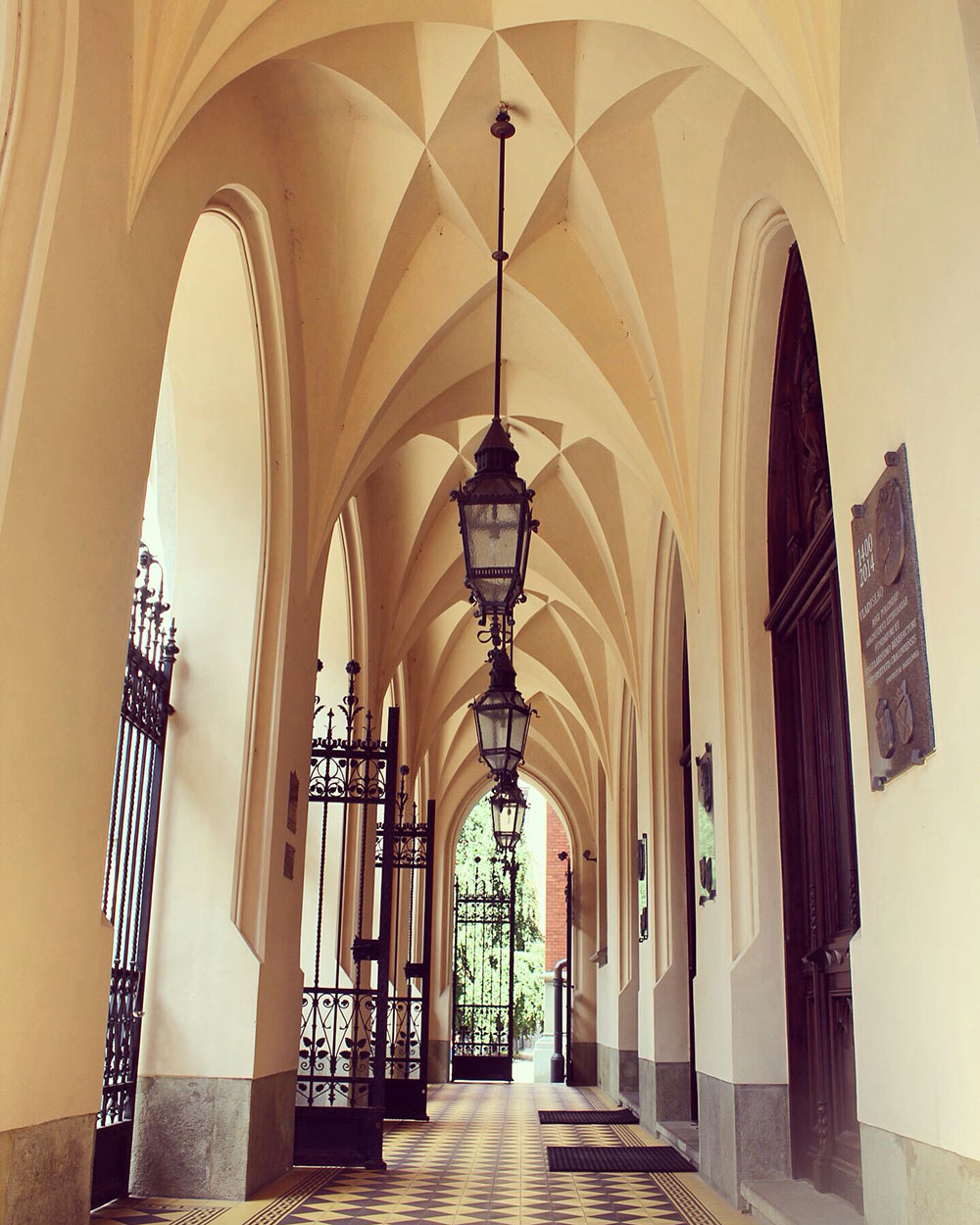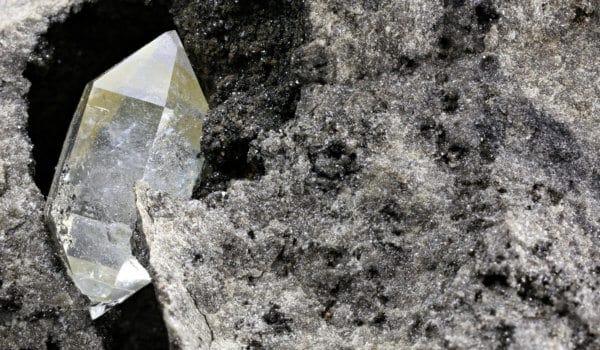Travelers with whom I have friendly relationships have hastened to assure me, “If you intend to go to Poland sometime, the only place you should visit is Krakow.” As it turned out, I had to spend a little time in Warsaw while changing planes, but I dedicated three whole days to exploring Krakow, and I would like to go there again.
My acquaintance with the city began with a cab ride from the airport. You would have to make that journey by taxi or by car, or by pubic transport. If you do not plan on visiting the suburbs of Krakow – for such a trip you would surely need a car – then spend some money on a taxi (around 30-50 PLN) to save time and nerves.
It would take only a quick glance to understand that Krakow is an exceptionally green city. On the way from the airport to the city, I didn’t see any chemical waste dumps or industrial logistics complexes. Instead, there is greenery everywhere, and the city is literally buried in verdure. In addition to shady patios here and there, the Old City is girded by a network of parks with lots of benches where you can have an enjoyable rest after the work day with an ice cream cone or a cup of coffee. People in Krakow enjoy their parks, which are never empty. In fact, the same goes for the coffee shops – but I am going to tell you about them a bit later.
Krakow is a city of brick buildings, scrumptious food, amber jewelry, antiques, and contrasts. Splendid Catholic churches, Stalin-era buildings, shops which are, surprisingly, vividly reminiscent of Soviet times, the shabby backyards and window frames of residential houses, tiny restaurants with magnificent food, an ancient Jewish synagogue which is still operating, and many other things all share a relatively small area (a tram trip from one end of the city to another takes around 30 to 40 minutes, depending on the route).
Experience has shown that three full days are sufficient to explore all the main attractions, to taste traditional dishes, and to relish the leisurely atmosphere.
So, why do you actually have to visit Krakow?
You have to go there because of the climatic contrasts, summer heat and winter snow
This point is especially relevant to those who are used to the calm weather conditions of Central Europe. For instance, a Czech guidebook gave me a cautious warning about the fact that – just imagine! – Krakow might be covered in snow from December to February, and the temperature may fall to – 10° C, a mark which is daunting from the perspective of an ordinary European.
However, the heat in early August was just as extraordinary – there were times when the thermometer rose to +32° C. So, after a three-hour long walk, and even though I was wearing proper protective equipment (straw hat and sunglasses), all I wanted was to crawl into a shadow and die with a cold drink in my hand.
In order to make your life easier, you should pause now and again in those shadowy backyards or go down to the river from time to time. You won’t be able to hide from the sun, but you will enjoy the blessed coolness which blows across the Vistula. It is always better than thrusting your way through the flocks of tourist on the crowded streets.
The Vistula’s waterfront resembles “Naplavka” in Prague. A smooth asphalt walkway runs along it; there you can go for a pleasant run, or ride a bike or roller skates. As evening falls, the restaurants on the various ships and boats which are moored along the shore commence their activity. The sounds of live music float in the air, while locals overcome fatigue during conversations and dinners under the fuzzy lights of colored garlands.
If the summer heat catches you in the city center, then use one of the local restaurants as a shelter. Any place on the town square would be suitable for observing the passersby. And for calm repose in a quiet place, away from the crowds, you should go to a restaurant like Cafe Camelot, a favorite spot of local intellectuals and students. Prices here are quite reasonable, servings are generous, and it has two patios where you can rest.
Lulu Living Concept Store, a shop selling designer interior items, is situated on the next floor. It is a real tragedy for a wallet, whether the item is big or small: an antique Victorian sofa with armrests covered with gold leaf, silver tongs for cubes of sugar, table glass in the medieval style, folding screens, suspensions, posters, tin plates with funny slogans. In other words, it has everything for those who admire style in the details.
By the way, on your way to Camelot, don’t forget to jot down an address for the evening. It is one of the best jazz clubs in Krakow – U Muniaka (the entrance fee is 10-20 PLN, depending on the day of the week).
Over a cup of excellent coffee
Krakow is a city of coffee culture. Those who order tea are recognized as “out-of-towners” and are simply looked upon as weird people. You can get a cup of coffee any place, but it is better to drink it in style. For instance, you can do it in the coffee shop called Noworolski – the place where Vladimir Ilyich Lenin spent some time during timeouts between making revolutionary plans. Then you can go shopping in the market stalls of Soukenice.
To eat in Krakow, to drink in Krakow
However, you can’t survive on coffee. People in Krakow also like to eat; therefore a walk around the city has every chance to turn into a gastronomic tour, because you will come across an abundance of attractive places along the way.
You should start your day with a hearty breakfast at one of those places, where they serve such meals all day long, for example, the Moment Cafe. Besides, you can find fresh and delicious pastries and coffee in most of the places in the center of the Old Town.
What’s interesting is that Italian cuisine enjoys an exceptional popularity, while French cuisine is in second place. However, a certain gustatory flair is universal, and apart from the traditional dishes, there are always Polish-Italian or Polish-French combinations on each menu: for example, Polish dumplings with frog meat (restaurant La Fontaine). A prime example of haute cuisine is Cyrano de Bergerac, a restaurant which is regularly recognized as the best of its kind in Galicia (also known as Southern Poland). Visit Mlod and Wino for a taste of traditional Polish cooking. In the evenings, they have live music, and tablecloths with liberty prints create the atmosphere of dining in someone’s home. Try beetroot soup with dumplings (13 PLN), wheat stew with sausage and radish (19 PLN), local pies (Polish – pierogi) stuffed with meat, liver, venison, mushrooms, cabbage, or fruit (every serving contains 10 pieces, the price is 28-46 PLN), and a snack – olives and prunes wrapped in pieces of fried bacon with smoked cheese. Local Hungarian or Chilean wines would be a perfect complement to your meal. Poland itself can’t boast of good local wines, although good wine is much appreciated here, and people drink it with great pleasure.
The second and third places on the list of alcoholic beverages are occupied by vodka (Poles, just like Russians, believe that they invented this drink), and beer. There are a great many sorts and flavors of vodka in Poland, although connoisseurs of Czech beers most certainly will not be amazed by the beer, which is served in local bars or sold in shops.
If you want to taste a decent foamy drink, go to the brewery called Lubicz. This local pub has only fresh seasonal beers with a splendid range of snacks and hot dishes, so you won’t be disappointed. Bartenders at the Wodka Cafe bar will help you to puzzle out the distinguishing features of different flavors of vodka.
What happens in Krakow stays in Krakow
The Kazimierz district is famous for its capacity to party and have fun. Despite the abundance of synagogues, at nightfall the old Jewish quarter takes on a new personality. On the streets of Kazimierz, people are rolling up cigarettes, drinking cherry vodka, and enjoying cheap but tasty wine and beer; and they are talking about art and are dressing up in a style that makes the street walkers’ heads turn. There are countless bars and restaurants in a compact area. Half of them close down at dawn, but when the night comes again, they start to buzz with life.
If you want to plunge into the bohemian atmosphere, and get to know an informal community and dance to good music, then walk on over to Alchemia, where they use candles instead of electricity, and after midnight the DJ begins to play music in the basement. Grab a glass of good wine at BARaWINO or an excellent cocktail at Le Scandale. Coffee with liqueur or something stronger waits for you at Singer (a similar bar, where vintage sewing machines of the same name are bolted to tables, is situated in Ceske Budejovce), and go to Omerta for a pint of beer. Shops open 24/7 are available for those who don’t imbibe enough strong beverages at the bars. According to many travel writers’ observations, in Krakow, in contrast to many other European cities, no one would ask for your ID or inquire about your age.
If you seek luster and shine, then go to the clubs in the city center: everything there is more familiar to the eye and the ear, but there is not a chance that you will feel the distinctive atmosphere of Krakow at night.
How not to fall from the watch tower
If you still have some time left after walking through Krakow’s streets, lunches on the square, dinners and fascinating night adventures, then don’t miss a chance to do the following things:
Have a picnic on the banks of the Vistula or in a park.
Try to count how many churches you can find in the city (Poles are remarkably pious people), and visit at least one of them.
Connect with the tragic history of the Jewish people and visit the former ghetto.
Go on an excursion to the main branch of the National Museum, which is an example of Soviet-era architecture. A basic entry ticket costs around 30 PLN, and 10 to 30 PLN for individual displays. You don’t have to take in all the exhibits, but the Museum’s decorative arts, as well as the section devoted to Polish military schooling, would certainly be worth your time and money.
You can take a break from the noise of the city in Krakow’s botanical garden.
You can take a walk from the National museum to the opposite end of the city virtually without making a single turn, except for the House of the Singing Frog on the next street. When you get there, you should check out the “Medical” district (there is no better way to call it) and admire the number of institutions there, all related to the noble profession of medicine.
Buy some mementos in Krakow. The main objects of value are not the clothes, but the countless treasures hidden in the local designer shops. Turn your attention to magnets made of wood, vintage notepads, dishes, amulets, charms, leather bracelets and handmade bags, magazines, and antique Polish books. Connoisseurs can purchase wonderfully made crosses and icons made of metal and wood. And, finally, the “Tears of the Baltic” – amber and the items made of it. Look for them not in the market stalls catering to tourists (Soukernice) but in the shops owned by local craftsmen.
Photos: Nina Johnson
Support us!
All your donations will be used to pay the magazine’s journalists and to support the ongoing costs of maintaining the site.
Share this post
Interested in co-operating with us?
We are open to co-operation from writers and businesses alike. You can reach us on our email at [email protected]/[email protected] and we will get back to you as quick as we can.
